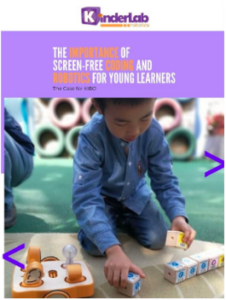Edutopia: Screen-Free Computational Thinking
In this article, the author describes the various benefits of screen free programming for elementary students, where they can learn logic through collaborative physical activities, and not on a laptop or tablet.
“Computational thinking is a logic and problem-solving process that pairs skills like perseverance and collaboration with concepts like algorithms and loops so that students can build solutions that could be carried out by a computer. As many schools are learning, weaving computational thinking and computer science education into curricula, even at the elementary level, can result in learning experiences that are both valuable and engaging — and that foster diversity in STEM.”
About KIBO
“Physical computing through robotics is a great way to teach computational thinking, as it is motivating, interactive, collaborative, and tangible because students can see their robot moving, which makes coding concepts and processes more concrete than they are onscreen. There are many educational robots that have sensors that can read students’ code in different formats but do not require a computer or tablet to program.
One of our favorites at Bloomington Public Schools is KIBO, a robot that scans codes off of cubical blocks that students string together to make a sequence. KIBO has many accessories and can record sounds, light up, and sense distance. Try using a KIBO in language arts by having students decorate it as a character and re-create scenes from a book.”
Read the full article.



















